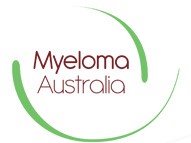Myeloma Australia’s Medical and Scientific Advisory Group (MSAG) presents the article of the week.
On behalf of Myeloma Australia’s Medical and Scientific Advisory Group (MSAG) please find below our article of the week. 3-year follow up of the phase III CASTOR study with independent expert commentary provided by MSAG chair Professor H. Miles Prince AM (Research Review, Study Review).
Daratumumab, bortezomib, and dexamethasone versus bortezomib and dexamethasone in patients with previously treated multiple myeloma: three-year follow up of CASTOR
Mateos et al. Clin Lymphoma Myeloma Leuk 2020; 20(8):509-518
Mateos, Sonneveld, Hungria, Nooka, Estell, Barreto, Corradini, Min, Medvedova, Weisel, Chiu, Schecter, Amin, Qin, Ukropec, Kobos & Spencer.
ABSTRACT Daratumumab is a human, CD38-targeted, immunoglobulin (Ig) Gk monoclonal antibody with a direct on-tumour and immunomodulatory mechanism of action. 4-6 In phase 3 trials, daratumumab-based regimens reduced either disease progression/death by ≥40%, doubled CR rates, and/or tripled minimal residual disease (MRD) negativity in patients with newly diagnosed multiple myeloma and relapsed or refractory multiple myeloma (RRMM). 1,2, 7-13 In the phase 3 CASTOR study in patients with RRMM, a regimen of daratumumab, bortezomib, and dexamethasone significantly prolonged progression-free survival (PFS) and induced higher rates of deeper responses than bortezomib and dexamethasone alone. 1, 2 In the 2-year, follow-up analysis of the CASTOR study (median follow-up of 19.4 months), median PFS was 16.7 months with daratumumab, bortezomib, and dexamethasone versus 7.1 months with bortezomib and dexamethasone alone (hazard ratio [HR] 0.31; 95% confidence interval [CI] 0.24, 0.39; p<0.0001).
EXPERT’S CONCLUDING COMMENTS This original CASTOR study publication provided practice-changing evidence of the value of adding daratumumab to bortezomib and dexamethasone. This update provides the clinician with data that solidifies some key practice points. Clearly, compared to bortezomib and dexamethasone alone, the triple-regimen has:
- better clinical outcomes as measured by ORR, CR or better and PFS;
- optimal benefit if utilised following failure of first-line therapy;
- the ability to achieve deeper responses as measured by MRD analysis translating into prolonged PFS even in the patients who achieve a CR or better;
- a toxicity profile that is very acceptable
The daratumumab, bortezomib, and dexamethasone combination is a very welcome addition to our therapeutic armamentarium and provides a meaningful improvement in outcomes particularly when used early in the patient’s disease course.

